

Web Studio: Features, Benefits, and Best Practices
Provides an overview about Marketing Cloud Web Studio and it's Features, Benefits & Best Practices
By Ajay Kumar Thangavel
Salesforce Developer
Web Studio: Features, Benefits, and Best Practices
In today's fast-growing digital world, businesses must use traditional marketing methods to stay ahead. Reaching customers through personalized and interactive experiences is mandatory, whether it's through websites or applications. Salesforce Marketing Web Studio offers a platform to design and optimize web interactions. It helps businesses create meaningful connections with customers.
Are you ready to dive in? This blog will walk you through that you need to know about Marketing Cloud Web Studio.
What is Marketing Cloud Web Studio?
Web Studio is a module within Salesforce Marketing Cloud that allows you to create dynamic web content that is purely data-driven. If you are a marketer working with Salesforce Marketing Cloud, it will enable you to design and deploy interactive web experiences for your visitors on the web. You can further personalize these experiences to connect them to your overall marketing strategy.
What are the Features of Web Studio?
Cloud Pages
Marketers can use Cloud Pages, a feature provided by Marketing Cloud Web Studio, to create targeted landing pages, microsites, and interactive forms. It can also collect lead information and trigger automation workflows to enhance lead generation efforts.
Dynamic Content & Personalization
As we mentioned before, Web Studio is an excellent personalization tool. It leverages your customer data from Marketing Cloud to help you create customized web experiences. It also supports updating real-time content based on how users interact with existing content.
Forms & Lead Capture
Another essential feature of this studio that enables customer data collection is forms & lead capture. You can create and embed forms directly from the marketing cloud on your website. It also allows you to integrate these forms with Salesforce CRM to collect data. All you have to do is set the workflow in place.
SEO Optimization & Analytics
Since it is a tool meant for websites, it has built-in Search Engine Optimization (SEO) capabilities. It can help you improve the search rankings of landing pages using analytics. The performance analytics within Web Studio tracks engagement, conversion rates and user behavior to suggest better SEO strategies for your website.
Integration with Other Marketing Cloud Studios
Yes, we are talking about integration yet again! Since Marketing Cloud Studios is seen as one entity within the Salesforce ecosystem, they offer exceptional integration. The Web Studio in Salesforce Marketing Cloud works in conjunction with Email Studio, Mobile Studio, and Journey Builder to provide a consistent cross-channel experience. This helps you automate your marketing workflows through website interactions.
How to Create a Landing Page in Web Studio By using Cloud Pages?
Creating a landing page is fairly easy in Web Studio with the help of Cloud Pages. Here is step-by-step guide for you,
Open your Overview page from the menu bar at the top in Web Studio.
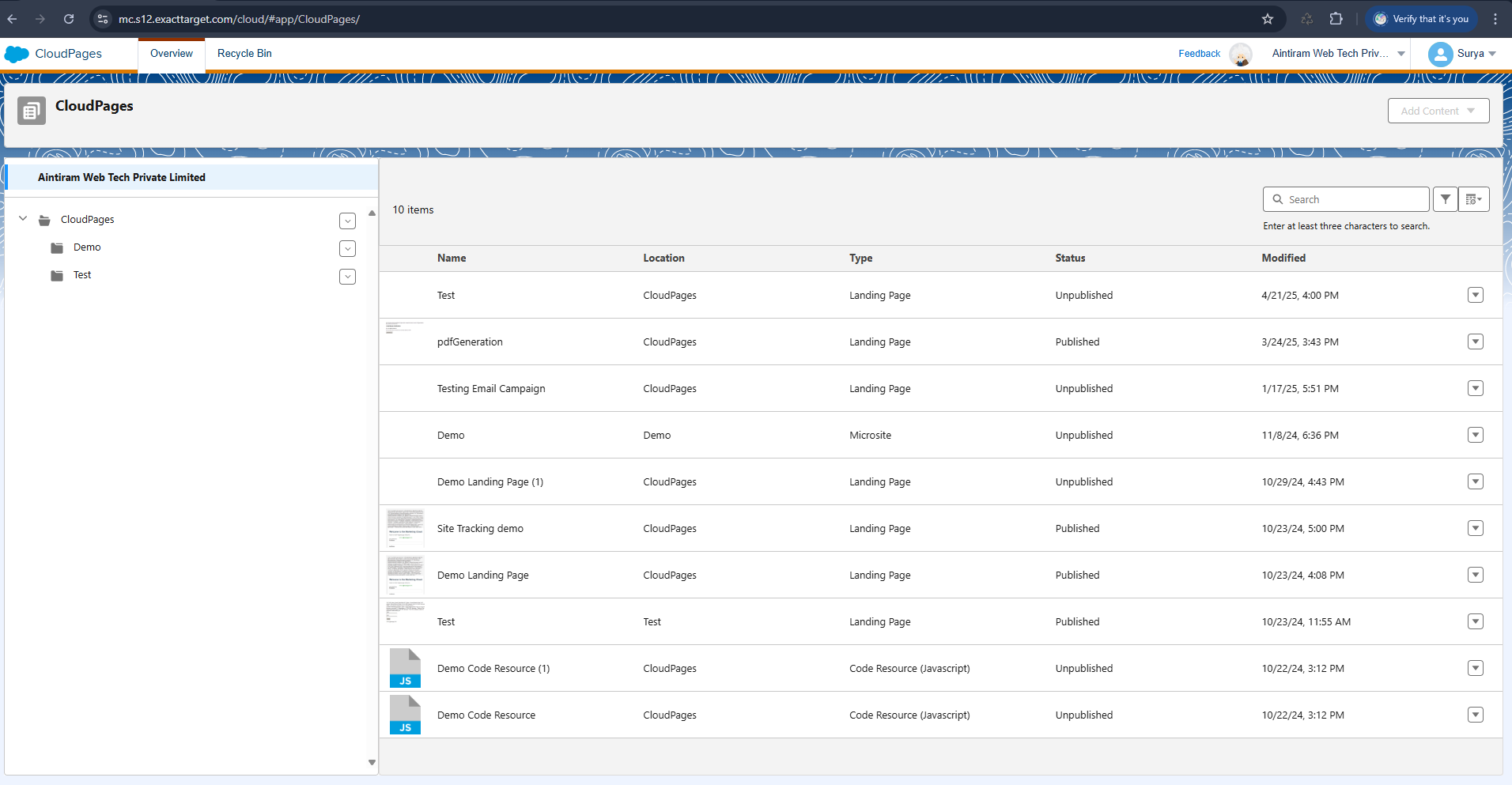
Click on the “Add Content” button at the top right corner. Here you will see various options to create content in Web Studio. Click on “Landing page” to create a new page.
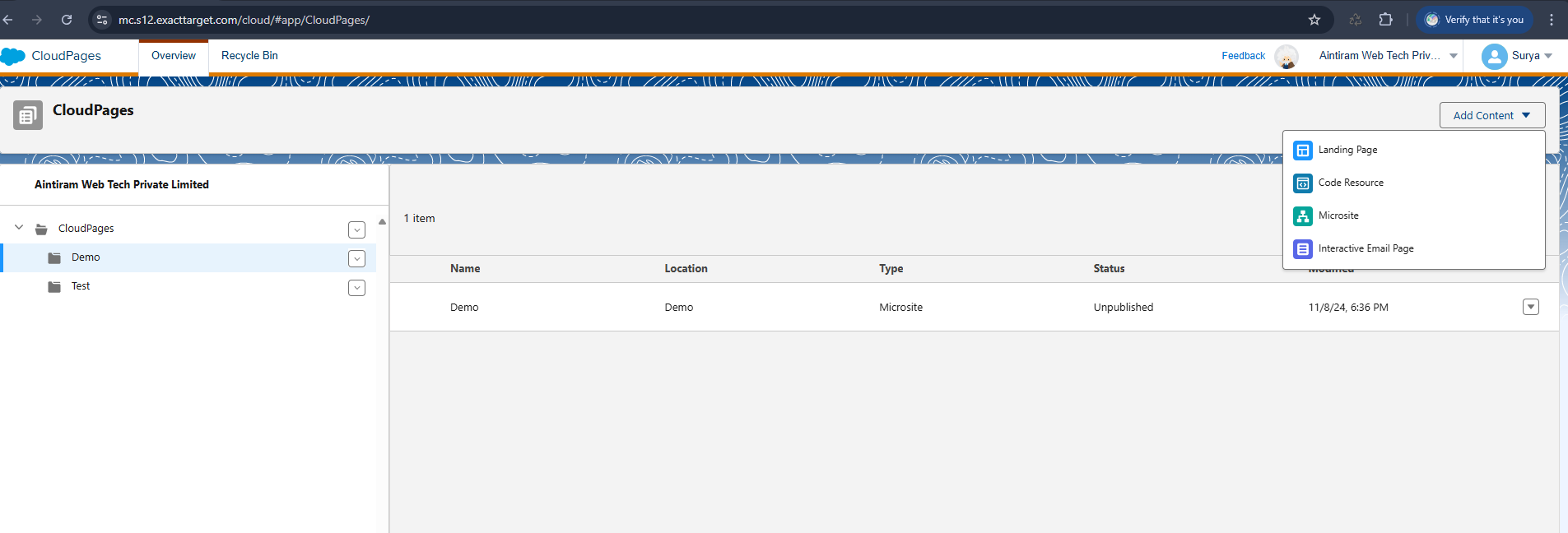
You will see a dialogue box in which you have to name your landing page and add a description for the same. Once filled, click on the next button.
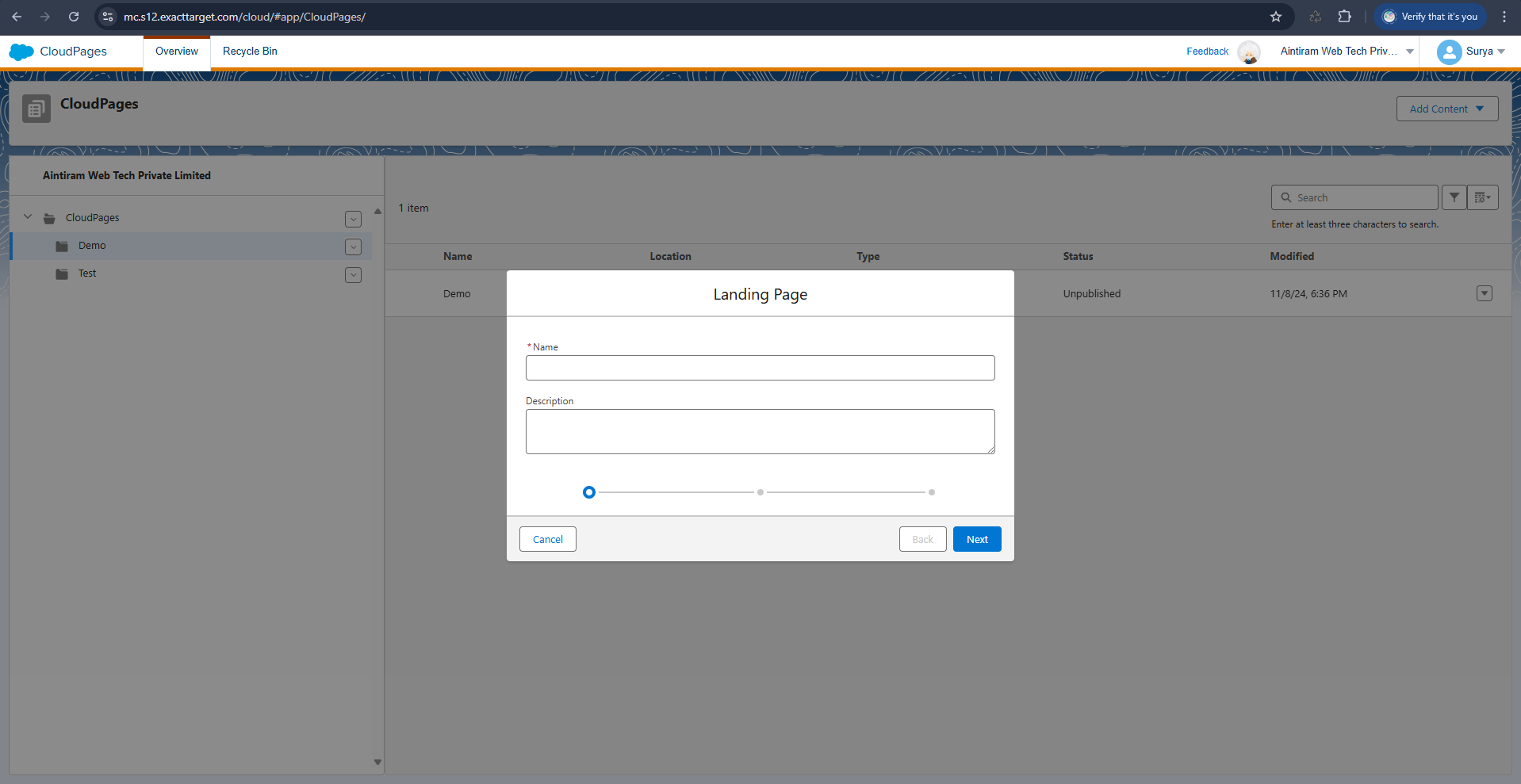
4. The next step is to choose the Layout for your Landing Page. You will see various options and you can choose the one that fits your requirements.
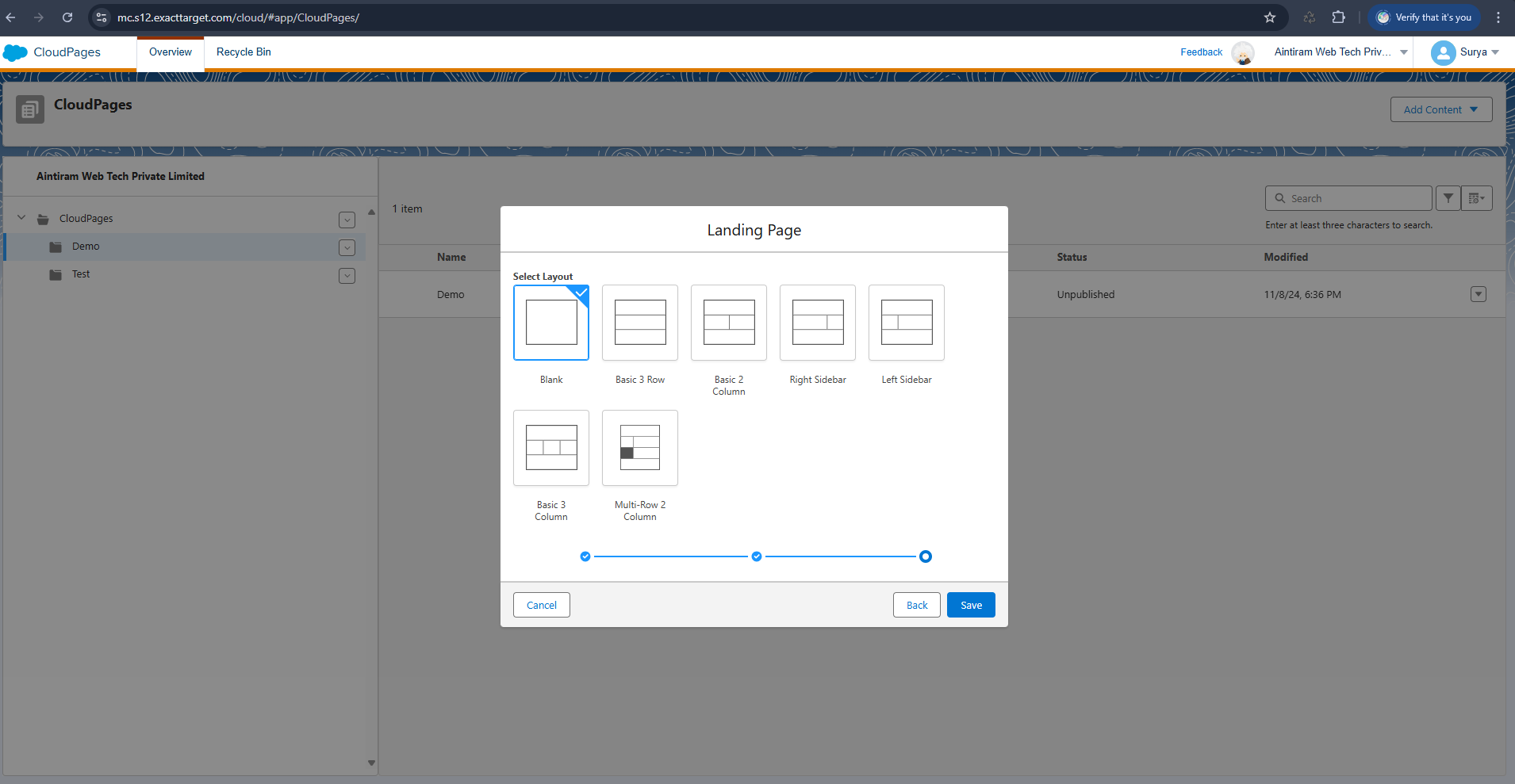
5. After clicking on Save, this is where you can design your landing page. You can see that the left side shows different tabs such as Blocks, Content, Layouts, Design, Tree View, etc. that you can use to customize the page.
6. On completion of design you can press save on the top right corner or choose to publish your landing page.
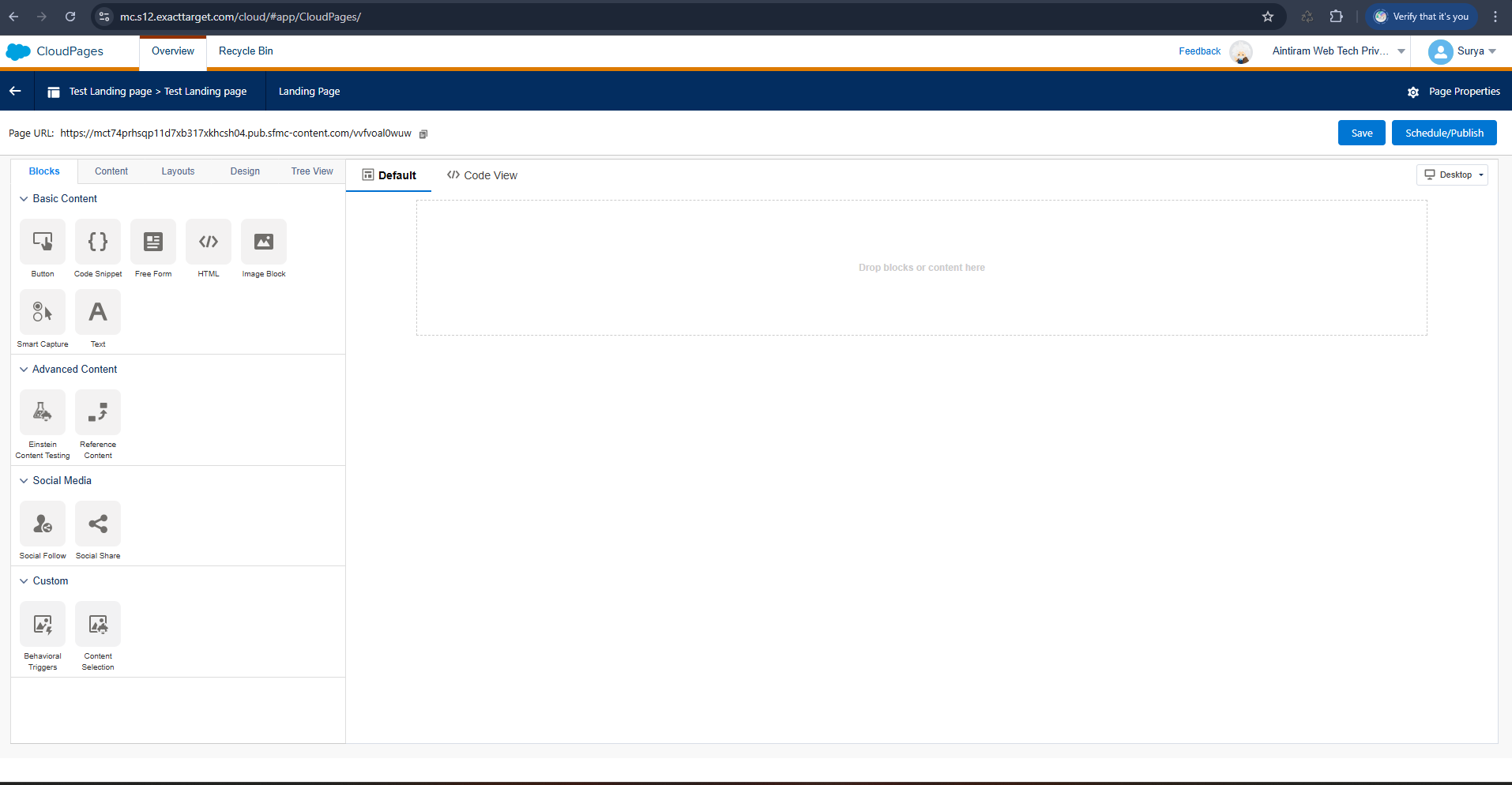
Benefits of Using Web Studio in Salesforce Marketing Cloud
Enhanced Customer Engagement
Web Studio enables personalized, interactive content using AMP script and dynamic content blocks. By leveraging customer data from Marketing Cloud, brands can display targeted offers, real-time updates, and interactive forms, ensuring a relevant experience. This ultimately enhances engagement and conversion rates.
Seamless Integration with Marketing Cloud
Web Studio connects seamlessly with Marketing Cloud’s Email Studio, Journey Builder, and Audience Builder. It allows marketers to trigger personalized web experiences based on email clicks, customer behavior, or data updates. Additionally, this integration ensures consistent messaging across multiple channels, such as email, SMS, and social media.
Improved Lead Generation
Using Cloud Pages, marketers can build dynamic landing pages with embedded forms that capture user data. These pages sync directly with Marketing Cloud’s Data Extensions, allowing instant lead segmentation and nurturing through automated Journey Builder workflows. This helps in improving conversion rates without manual intervention.
Data-Driven Decision Making
Web Studio provides built-in analytics that track visitor interactions, form submissions, and content performance. Marketers can generate detailed reports by integrating with Marketing Cloud Intelligence. You can further use these reports to optimize campaigns based on real-time user behavior, improve ROI and target with precision.
Best Practices for Web Studio in Salesforce Marketing Cloud
- Leverage AMP script & Personalization: Use AMP script to update content on landing pages dynamically based on user data.
- Ensure Mobile Optimization: All web content should be responsive to deliver a seamless mobile experience.
- Use Cloud Pages for Lead Nurturing: Combine Cloud Pages with Journey Builder to create automated, data-driven follow-up campaigns.
- Monitor & Optimize Performance: Utilize Web Studio’s analytics to track performance and adjust content strategies accordingly.
- Maintain Brand Consistency: Align web experiences with email, social media, and other Marketing Cloud Studios to provide a unified brand experience.
Conclusion
Hope you had a great time today and learned with clear understanding of Web Studio in Salesforce Marketing Cloud. By now, you should have a good idea to create landing page by using the cloud pages. So, go ahead, explore Web Studio further and get some hands on. Finally, follow us and stay tuned for more upcoming blogs related to Salesforce Marketing Cloud Web Studio.